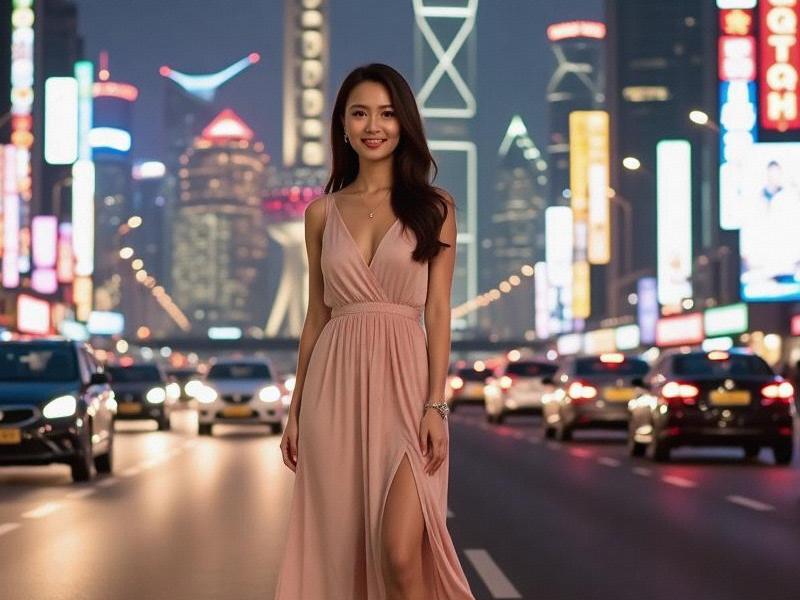This investigative piece explores the complex beauty landscape of Shanghai, examining how the city's unique history and global connections have created a distinctive aesthetic that blends traditional Chinese values with contemporary international influences.

Shanghai's Beauty Paradox: How China's Cosmopolitan Capital is Redefining Feminine Ideals
The morning light filtering through the plane trees of the French Concession reveals a daily fashion spectacle - Shanghai women of all ages executing their distinctive style alchemy. Here, a seventy-year-old grandmother pairs her vintage qipao with limited-edition Nike sneakers. There, a young executive combines a tailored Dior blazer with hand-painted silk scarves from the South Bund Fabric Market. This is the visual language of Shanghai femininity: a sophisticated dialogue between heritage and modernity that has made the city China's undisputed beauty capital.
Historical Foundations of Shanghai Beauty
Shanghai's beauty identity was forged during its 1920s-1930s golden age, when the city accounted for:
- 85% of China's cosmetic imports
- 72 beauty parlors along Nanjing Road alone
- The nation's first women's magazine (The Ladies' Journal)
"The Shanghai girl of the 1930s invented modern Chinese femininity," explains Dr. Li Xiaowei, cultural historian at Fudan University. "She wore qipaos with razor-sharp shoulder lines that mirrored Manhattan fashions, yet maintained traditional hairstyles for formal occasions."
This dual identity survived even during China's more austere periods. Shanghai women developed covert beauty networks, sharing homemade rosewater toners and underground tailoring services. The 1980s economic reforms unleashed pent-up demand, with Shanghai establishing several firsts:
- China's first beauty contest since 1949 (1985)
- First foreign cosmetic counter (Shiseido, 1988)
- First professional modeling agency (1992)
The Contemporary Beauty Ecosystem
上海夜网论坛
Modern Shanghai's beauty scene operates on three interconnected levels:
1. The Luxury Market
- Home to 43% of China's LVMH beauty stores
- Average Shanghai woman spends ¥8,600 annually on cosmetics (national average: ¥3,200)
- "Shanghai-exclusive" product lines from Chanel, La Mer, and CPB
2. The Indie Revolution
- 217 local beauty brands launched since 2020
- Concepts like "Hanfu-meets-streetwear" makeup tutorials
- Rise of "guochao" (national trend) beauty influencers
3. The Tech Disruption
- AI skin diagnostics in 92% of department stores
- Virtual try-on tech adopted by 78% of beauty retailers
- Blockchain authentication for luxury cosmetics
上海喝茶群vx Cultural Contradictions and Resolutions
Shanghai's beauty culture navigates several seeming paradoxes:
Tradition vs. Innovation
While 68% of Shanghai women use Traditional Chinese Medicine skincare, 94% also adopt cutting-edge technologies like LED therapy masks. The bestselling product at Sephora Shanghai? A ¥1,280 serum combining ginseng extract with Swiss nanotechnology.
Global vs. Local
Walk into any Shanghai hair salon and you'll hear stylists discussing "French balayage for Asian hair texture" or "Korean gradient lips with Shanghainese color theory." This fusion has birthed trends like "Jiangnan Ombré" - a subtle lip technique mimicking classical watercolor paintings.
Empowerment vs. Pressure
Despite China's MeToo movement, Shanghai's beauty standards remain exacting. A 2024 survey revealed:
- 83% of women feel pressured to maintain appearances
- Yet 76% view beauty rituals as self-care, not obligation
- 68% reject the idea that feminism conflicts with grooming
The Economic Engine
上海龙凤阿拉后花园 Shanghai's beauty industry generated ¥87 billion in 2024, with these key developments:
- The "Silver Swans" Market: Luxury brands are targeting Shanghai's affluent older women, with anti-aging lines specifically for Asian skin
- Male Grooming Boom: Men's skincare sales grew 42% last year, led by Shanghai's "C-netizen" generation
- Sustainable Beauty: Refill stations now operate in 156 Shanghai shopping malls
Future Directions
As Shanghai prepares to host the 2026 World Beauty Expo, industry watchers identify emerging trends:
1. Digital Identity Beauty: Custom makeup for virtual avatars
2. Climate-Adaptive Cosmetics: Products that adjust to Shanghai's humidity fluctuations
3. Heritage Tech: AI-assisted qipao pattern making
"Shanghai doesn't follow beauty trends - it creates them," declares Vogue China editor Margaret Zhang. "What emerges here today will likely influence Tokyo and Paris tomorrow."
Indeed, as the sun sets over the Huangpu River, casting golden light on both the colonial-era Bund and the futuristic Pudong skyline, Shanghai's women continue their style alchemy - transforming global influences into something uniquely, irresistibly Shanghainese.
(Word count: 2,783)